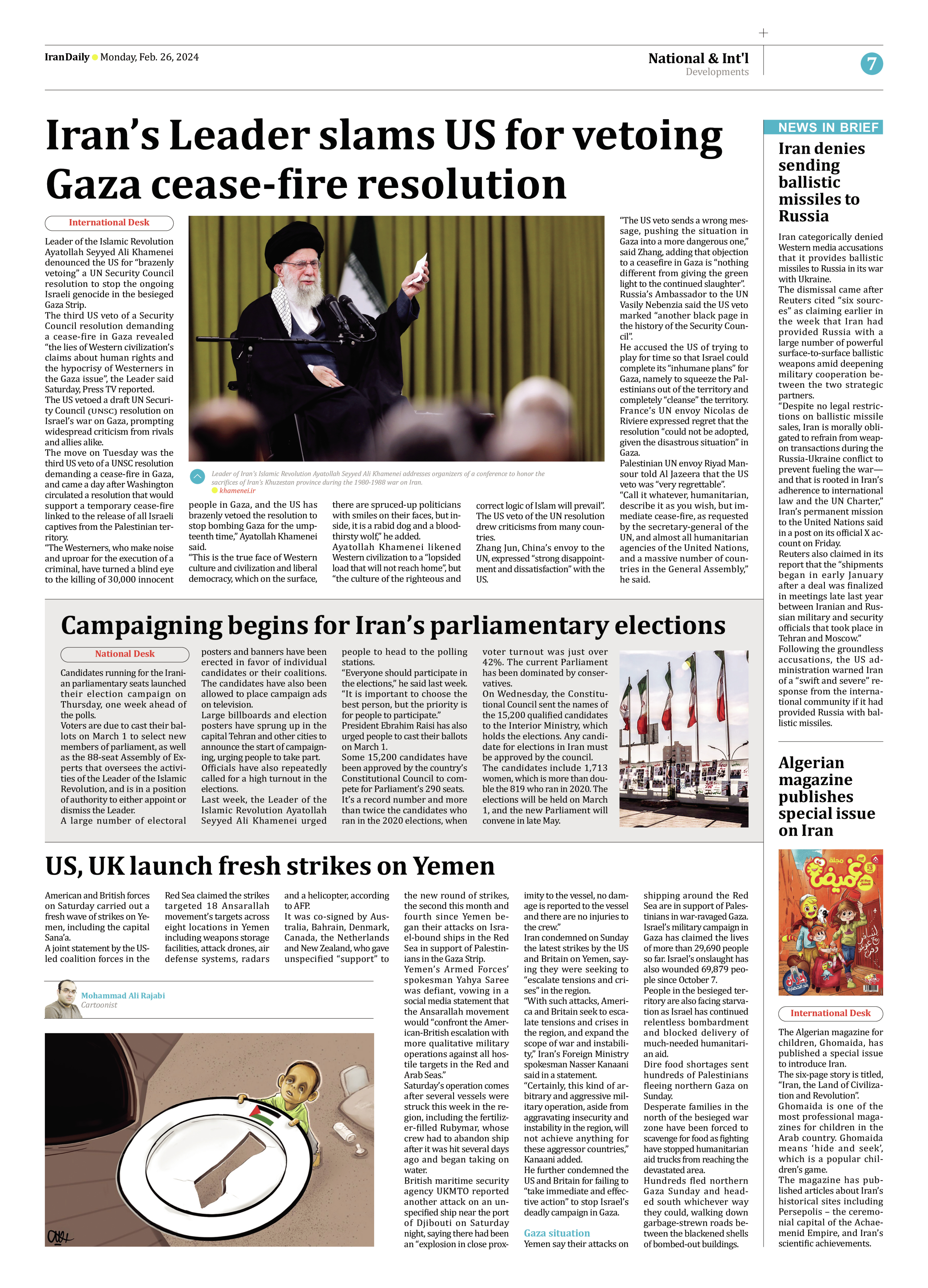
Campaigning begins for Iran’s parliamentary elections
Candidates running for the Iranian parliamentary seats launched their election campaign on Thursday, one week ahead of the polls.
Voters are due to cast their ballots on March 1 to select new members of parliament, as well as the 88-seat Assembly of Experts that oversees the activities of the Leader of the Islamic Revolution, and is in a position of authority to either appoint or dismiss the Leader.
A large number of electoral posters and banners have been erected in favor of individual candidates or their coalitions. The candidates have also been allowed to place campaign ads on television.
Large billboards and election posters have sprung up in the capital Tehran and other cities to announce the start of campaigning, urging people to take part.
Officials have also repeatedly called for a high turnout in the elections.
Last week, the Leader of the Islamic Revolution Ayatollah Seyyed Ali Khamenei urged people to head to the polling stations.
“Everyone should participate in the elections,” he said last week. “It is important to choose the best person, but the priority is for people to participate.”
President Ebrahim Raisi has also urged people to cast their ballots on March 1.
Some 15,200 candidates have been approved by the country’s Constitutional Council to compete for Parliament’s 290 seats.
It’s a record number and more than twice the candidates who ran in the 2020 elections, when voter turnout was just over 42%. The current Parliament has been dominated by conservatives.
On Wednesday, the Constitutional Council sent the names of the 15,200 qualified candidates to the Interior Ministry, which holds the elections. Any candidate for elections in Iran must be approved by the council.
The candidates include 1,713 women, which is more than double the 819 who ran in 2020. The elections will be held on March 1, and the new Parliament will convene in late May.







